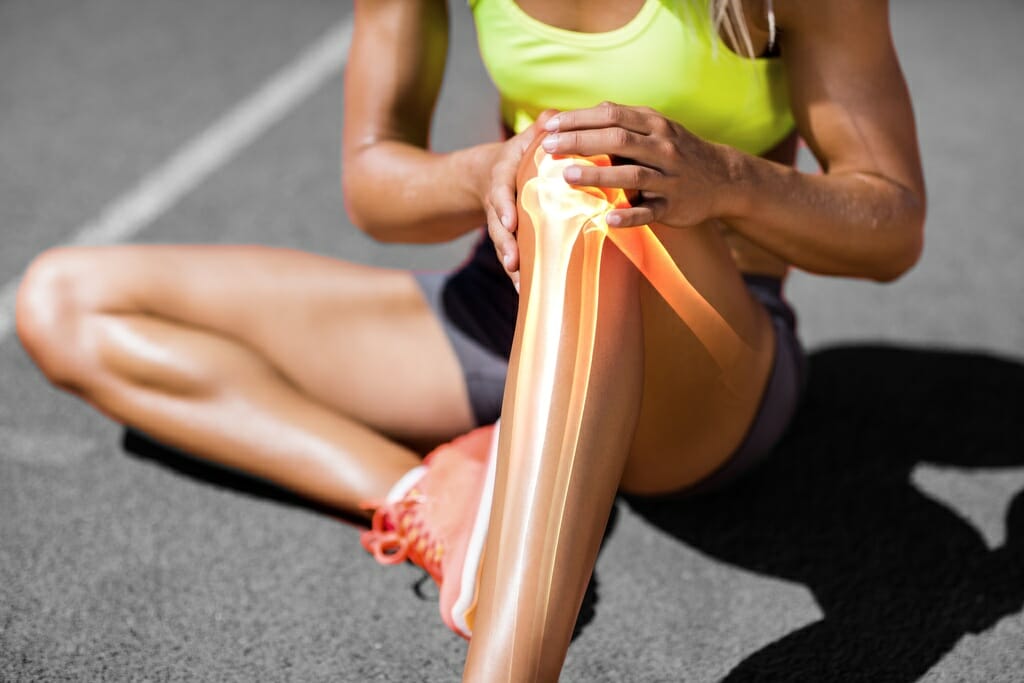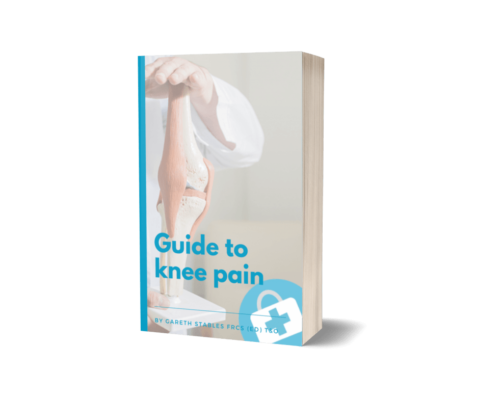Knee Pain – All You Need to Know
Knee Pain - all you need to know.
Knee pain is common and thankfully for most people, it isn’t usually a sign of anything serious. There are many possible causes of knee pain, from a simple muscle strain or tendon problem to some kind of arthritis. Sometimes a cause can’t be found.
As you get older, suffering from knee pain may become more common. You’re also more at risk of getting knee pain if you are overweight. Knee pain may sometimes be the result of a sports or other injury.

What are the common causes of knee pain?
Knee injuries
Torn cartilage, muscle tears, ligament injuries and sprains are all causes of knee pain. Often knee injuries happen when people are playing sports but you can injure your knee with everyday activities. In fact, many of my patients will tell me they injured their knee whilst out walking or gardening or doing some DIY.
Medial Ligament Injury
With a medial collateral ligament injury, pain and swelling usually come on straightaway after your accident, although you may not always have swelling. The injury causes pain over the inner knee. The ligament helps to keep the knee stable, so you may feel as if your knee is going to give way.
Cartilage tear
Symptoms of a torn meniscus cartilage can first be noticed up to a day after the initial injury. Pain and swelling may get worse and you may have difficulty fully straightening your leg. A more severe tear will be painful from the start.
The knee may also lock, feel stiff or feel unstable as if it’s about to give way from under you.
Patellofemoral pain syndrome
This can cause pain on the inside of your knee. It’s usually worsened by running, climbing stairs, squatting or after sitting for a long time.
Medial plica syndrome
Medial plica syndrome can typically cause pain on climbing stairs, running or squatting. You may have pain if you have your leg bent for a long time. The knee may also catch or click when you bend your leg.
Pes anserine bursitis
Pes anserinus syndrome (or pes anserine bursitis) causes pain on the inside of the knee, over a fluid-filled sac called the anserine bursa. Pes anserine pain gets worse when you repeatedly bend your leg, such as when going up and downstairs. Some people have pain at night, from one leg pressing on the other, which can disturb sleep. You may have slight swelling, but there isn’t usually a collection of fluid on the knee. Many people with pes anserine pain also have osteoarthritis.

Tendinopathy
Often caused by overuse, the patella and quadriceps tendons can swell and become painful. Knee pain at the front of the knee, worse during activity can be a sign of tendinopathy.
Knee Arthritis
Knee pain can develop gradually over time, might come on suddenly, or might come and go.
Arthritis is a term that means inflammation of the joints. Although there are many types of arthritis, most knee pain is caused by just three types: osteoarthritis, rheumatoid arthritis, and post-traumatic arthritis.
Osteoarthritis is the most common type of arthritis. It can affect anyone at any age, but it is most common in people over 50.
If you have osteoarthritis of the knee, you might feel that your knee is painful and stiff at times. It can affect one knee or both.

The pain might feel worse at the end of the day, or when you move your knee, and it may improve when you rest. You might have some stiffness in the morning, but this won’t usually last more than half an hour.
Knee arthritis makes it difficult to do many everyday activities, such as walking, climbing stairs and playing with your grandchildren! It can stop you from working and enjoying certain activities and is a serious disability for many people.
Although there is no cure for arthritis, there are many treatment options available to help you manage your knee pain and keep you active.
There are many treatments for your knee pain that do not involve surgery. These can include advice on lifestyle changes, like specific exercise programs and weight loss, tablets, and treatments like specialist regenerative knee joint injections.
For some specialist knee replacement surgery may be an option which allows people to get rid of their knee pain and get mobile and active again.
About the author:
Mr. Gareth Stables MB ChB, FRCS (Ed) T&O
Cheshire Orthopaedic surgeon, Mr Gareth Stables, is a fully UK trained Consultant Orthopaedic Surgeon specialising in knee surgery. Gareth has the highest qualifications possible for an orthopaedic surgeon in the UK, FRCS (T&O), and is on the GMC specialist register for Trauma and Orthopaedic surgery.
Gareth specialises in; keyhole or knee arthroscopy surgery, ligament reconstruction surgery, knee osteotomy and knee replacement surgery.


